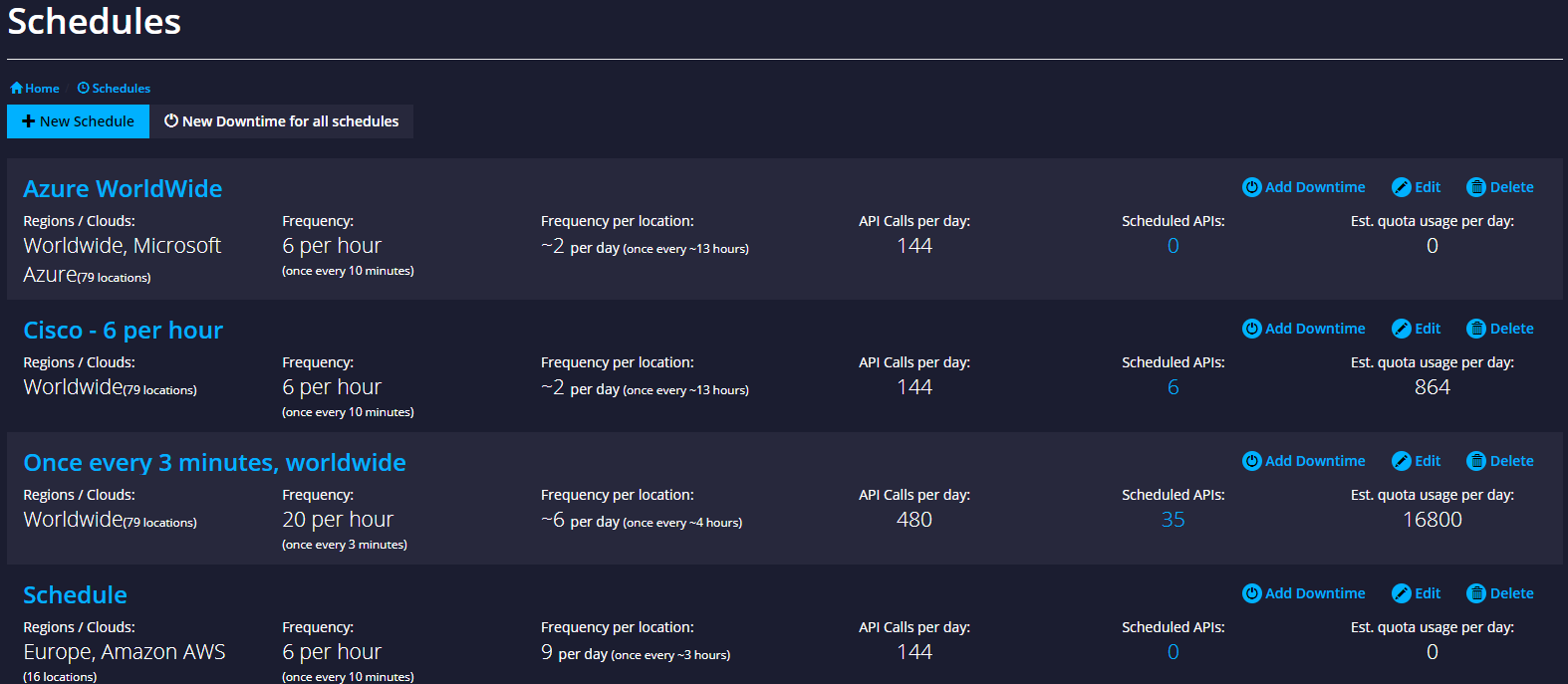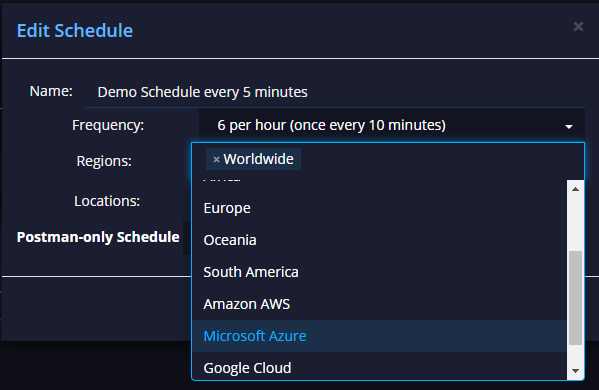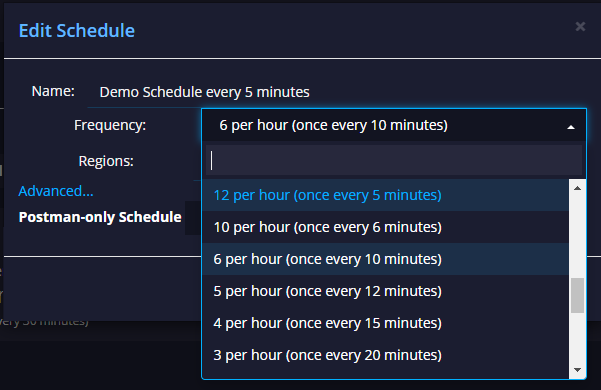Set Up Ongoing Observations
A one-off API call doesn't tell you very much about an API or the behavior of it - with 'schedules' you can run automatically from anywhere in the public cloud.
Key Concepts
API calls and Workflows can be run individually or automated by a schedule to run on an ongoing basis.
Why schedule your calls?Continuous observation at a reasonable frequency allows us to generate meaningful data on your API performance and warn you when things go wrong. We can typically give you up to 30 minutes more warning than other services and we will pick up technical problems often missed by your gateway or other products.
Additionally, we can check on the overall quality of your APIs and let you understand how and where things could be improved or spot different regional or cloud-specific problems.
What is a schedule?A schedule lets you run an API call or workflow on an automated recurring basis from a remote location. The location is typically one of the more than 60 cloud location around the world that APImetrics provides, but it can also be a special location supported by APImetrics over a mobile connection or an internal location if you have installed the APImetrics software agent on your own hardware.
You can create and edit schedules so that you can exercise your APIs at exactly the frequency you need from the locations that matter to your users. You can also use schedules to halt calls temporarily for instance when APIs are taken down for maintenance.
Scheduling your observations
APIs can be scheduled to run automatically from any of our 80+ locations around the world and the cloud. We handle distribution of the calls.
Suggested FrequencyWe normally recommend a frequency about 10 calls an hour, once every 5 minutes. The more data the more accurate our quality scores.
Gateway Rate Limiting WARNINGEven though you might have a gateway rated to thousands of calls per minute, we have seen behavior where if 2 or more calls arrive within a few milliseconds of each other, the calls will be rate-limited on the assumption that the API calls will exceed the limit. In a schedule, the calls from each location are offset from one another to avoid this situation.
If you click on the Schedules item on the lefthand menu, you will be taken to the Schedules page. The default Schedule is predefined.

Edit the schedule by clicking on the Edit button. You can choose to replace Worldwide with all the locations in a particular region such as Europe or all the locations provided by a certain cloud service provider such as Amazon AWS.

Frequency of Calls
Change frequency of calls from the drop-down - the scheduler will automatically randomly assign a location but over a period of time, all agents in a group should be used roughly an equal number of times.

Downtime
If you need to suspend calling for routine maintenance, or a period where you don't need monitoring coverage, you can schedule downtime from the scheduling menu.

You can compare and contrast your schedules on the schedules page. For a schedule that is in use, you can see how many a day the schedule will invoke an API call.
You can delete a schedule with the Delete button.
Clicking on the Schedule All APIs button for a schedule will schedule all your API calls with that schedule.
Updated 4 months ago